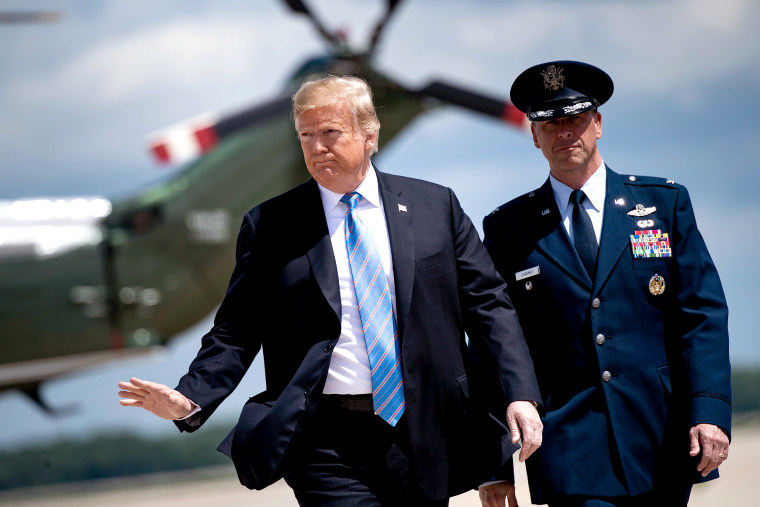President Donald Trump on Tuesday denied a report that his administration was considering sending up to 120,000 troops to the Middle East to respond to Iran — but added that if the United States were to go with such a plan, "we'd send a hell of a lot more."
Trump told reporters outside the White House that a New York Times story Monday night claiming his administration was reviewing military plans against Iran was "fake news."
But moments later, the president said he would consider such a plan.
"Would I do that? Absolutely. But we have not planned for that," Trump said. "And if we did that, we'd send a hell of a lot more troops than that."
U.S. officials told NBC News that the plan to send up to 120,000 troops to the region was one of a range of options that Defense Secretary Patrick Shanahan presented to Trump's national security team during a recent meeting about Iran.
The option involving as many as 120,000 troops represented a worst-case scenario contingency in the event that the U.S. and Iran were to go to war, the officials said.
Under this scenario, 120,000 would be the sum total of U.S.troops already in the region, plus additional forces that would be deployed, mainly in the form of air forces and naval power, according to the officials. This option would take months to implement if it were ever used.
It's standard for the Pentagon to update contingency plans as situations change in a region, the officials noted. In this case, the U.S. collected intelligence that Iran and its proxies were planning attacks against the U.S. military in the region, so the Pentagon adapted their emergency plans for how to respond to an attack from Iran.
According to The Times, which first reported the story, the revised plans presented by Shanahan— which the newspaper said did not call for an invasion of Iran — were ordered by Trump's national security adviser John Bolton, known for his hawkish stance on the country, according to the report.
Tensions between the U.S. and Iran have remained high in recent months, and grew even more fraught earlier this month when the U.S. military decided to send a carrier strike group and Air Force bombers to the Middle East in response to Iranian threats to U.S. military forces and civilians at multiple locations in the region.


